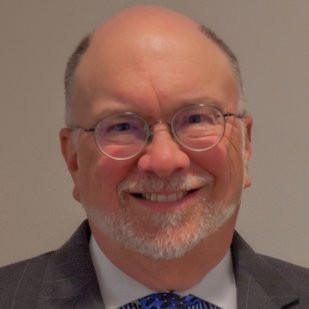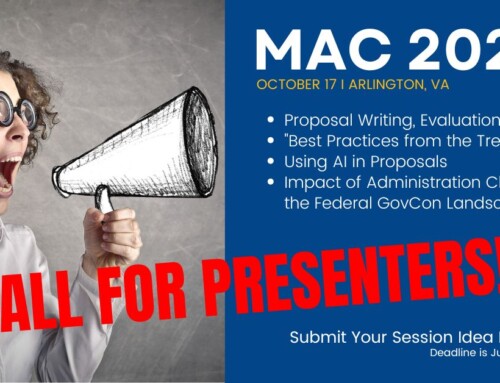I’ve been asked about what guidance I would offer to an individual just starting out in proposal development. First and foremost, become an information “sponge.”

© Dr. R.S. Frey. Known as the “Sponge Capital of the World,” Tarpon Springs, Florida, is an area where Greek immigrants settled during the early 1900s.
Learn about the Federal acquisition lifecycle or commercial client’s buying cycle, as well as your organization’s Business Development, Capture Management, and Proposal Development staff, processes, and terms of art. For proposal work within the U.S. Federal Government marketspace, become very familiar with the 12 parts (Sections A – M) that comprise a Federal Request for Proposal (RFP) which follows the Federal Acquisition Regulation’s (FAR) Uniform Contract Format (UCF). Most Federal agencies do adhere to the UCF. Importantly, join and participate in the structured activities of your local chapter of the Association of Proposal Management Professionals (APMP). Work to build social relationships with fellow proposal professionals.
Invest time learning about exactly what your company is selling. For example, GE focuses on “building a world that works.” CACI transforms “actionable data into information advantage.” SAIC accelerates “outcomes.” And Universities Space Research Association (USRA) advances “space science and technology.” Become conversant in your firm’s key technical support services offerings, and know who your primary Federal or commercial customers are.
In addition, become intimately familiar with the processes and systems (i.e., technology and software) adopted for use by your company. Generally, small business firms lack market differentiation and subject matter experts, and grapple with high overhead labor costs. Systems and processes can help with market differentiation. Small business firms can also leverage software tools that deliver automation and workflows as a force multiplier. When combined, these systems and processes can assist with controlling (i.e., limiting) overhead labor costs in ways that lead to competitive pricing and winning more contracts.
Recognize that proposal development is absolutely not a 9-to-5 position.
And that’s okay. Your focus  should be on compressing the “time-to-value” for yourself as a member of the proposal team. Life does, in fact, become driven by acquisition cycles. Frequently, Federal Government procurements shift to the right; in effect, are delayed. It will be advantageous to you to become extremely time-flexible. On the other hand, it is vital for you to engage in some type of outside-of-work activity just for you. My personal passions are photography and woodworking, particularly woodturning on my mini-lathe. They provide counter-balance to the demands of proposaling in today’s hypercompetitive marketspace. Over the years, I have heard many proposal professionals say that they have no hobby, or that hobbies are for retirement. Take care of yourself along the way. Hobbies will contribute to your mental and emotional well-being.
should be on compressing the “time-to-value” for yourself as a member of the proposal team. Life does, in fact, become driven by acquisition cycles. Frequently, Federal Government procurements shift to the right; in effect, are delayed. It will be advantageous to you to become extremely time-flexible. On the other hand, it is vital for you to engage in some type of outside-of-work activity just for you. My personal passions are photography and woodworking, particularly woodturning on my mini-lathe. They provide counter-balance to the demands of proposaling in today’s hypercompetitive marketspace. Over the years, I have heard many proposal professionals say that they have no hobby, or that hobbies are for retirement. Take care of yourself along the way. Hobbies will contribute to your mental and emotional well-being.
Often times in small organizations, proposal development professionals are faced with a challenge. That hurdle involves generating responses to Federal or private-sector solicitation documents without having detailed insights from business development or capture management staff regarding the customer’s mission, operational environment, relevant technologies, or governance framework. In fact, don’t even expect to have these insights hand-delivered to you.
Becoming a “proposal journalist” will help you to get smart on your own, surmount these obstacles, and contribute to an increased probability of winning (Pwin). There is a plethora of Web-based resources available to build your customer- and technology-specific competencies and confidence. This is not to say that you can Google your way to sustained proposal success. Nonetheless, through mining relevant mission statements, core values, guiding principles and goals, strategic plans, technology roadmaps, agency-specific white papers, handbooks, and Congressional testimony, you can gain an amazing amount of insight, as well as ideas for graphics concepts.
Web-based research on recent awards by a given customer to competitors can also shed considerable light onto that customer’s buying habits and preferred technical solutions. Speeches and biosketches or curriculum vitae of key Federal or commercial-sector leaders, and published papers of those individuals can prove to be invaluable in proposing meaningful, on-target solutions to those same customer leaders. Given the level of executive review and approval, customer news releases are excellent sources of knowledge. Specific words and phraseology that are used can be incorporated into the proposal or oral presentation.
From a technical and business perspective, there is much to be gained by examining white papers, technical reports, and case studies available from TechRepublic; Ernst & Young; Gartner; KPMG; Booz, Allen, Hamilton; and Advanced Technology Academic Research Center (ATARC) as well as Mitre; Microsoft Azure (white papers, analyst reports, and e-books); Amazon Web Services (AWS) (white papers and guides); Mosaic Data Science; and the SANS Institute (cybersecurity white papers).
In addition, Websites can help proposal development staff professionals understand how the customer’s organization is structured, and provide insight into key graphical or word concepts that the customer uses frequently. For example, the Small Spacecraft Systems Virtual Institute (S3VI) publishes a quarterly digest of resources and activities occurring within NASA and external small spacecraft communities that can shed light on the latest points of interest to the customer community. The Federal Emergency Management Agency (FEMA), U.S. Department of Labor (DOL) Occupational Safety and Health Administration (OSHA), and U.S. Environmental Protection Agency (EPA) also have publicly available newsletters.
Documented trip reports based on execution of Call Plans can be rich reservoirs of direct insight into a customer’s hopes, fears, biases, critical issues, and success factors. Honing your skills as an information miner will yield significant proposal-applicable dividends. Applying a Think🡪Draw🡪Write methodology to what you learn will help you to become much more self-sufficient as a proposal professional. Let’s take this methodology apart. Think: conduct the research, and integrate the findings. Draw: actually draw out key graphics on a whiteboard or on screen with such tools as Microsoft Visio, Gliffy, Google Drawings, and Edraw. Write: develop narrative that addresses the RFP and incorporates elements of what you learned from your research and the Call Reports.
Current and future proposal management professionals must prepare themselves to be an integral part of the proposal solution set development process. By doing so, you move up the value chain within your organization, and become a more sought-after knowledge worker in the marketplace at large. Harvard business professor Michael E. Porter described the concept of “value chain” in his path-breaking book, Competitive Advantage: Creating and Sustaining Superior Performance. The value chain in Porter’s construct divides a firm into the discrete activities it performs in designing, producing, marketing, and distributing its product (or services). You will want to expand your skillset and knowledge base to migrate beyond serving in a “commodity”-type proposal development role that will likely become automated in the years ahead. There is already RFP and proposal software, such as Qvidian, Relevant MatchTM from Relevant Software© Corporation, PerfectIt, and XaitProposal®. Look for ways to add value to the services you provide. Earning your Project Management Professional (PMP®) certification is one potential avenue. Maturing your craft to a level where you are invited to speak at an APMP Capture & Business Development Conference is another pathway to additional value.
I wish you the very best moving ahead with your professional proposal “calling.” I term it a “calling” because proposaling can be far more than just a “job” or even a “career.” It still remains exciting to me after 36 years traveling through proposal-land.





Leave A Comment